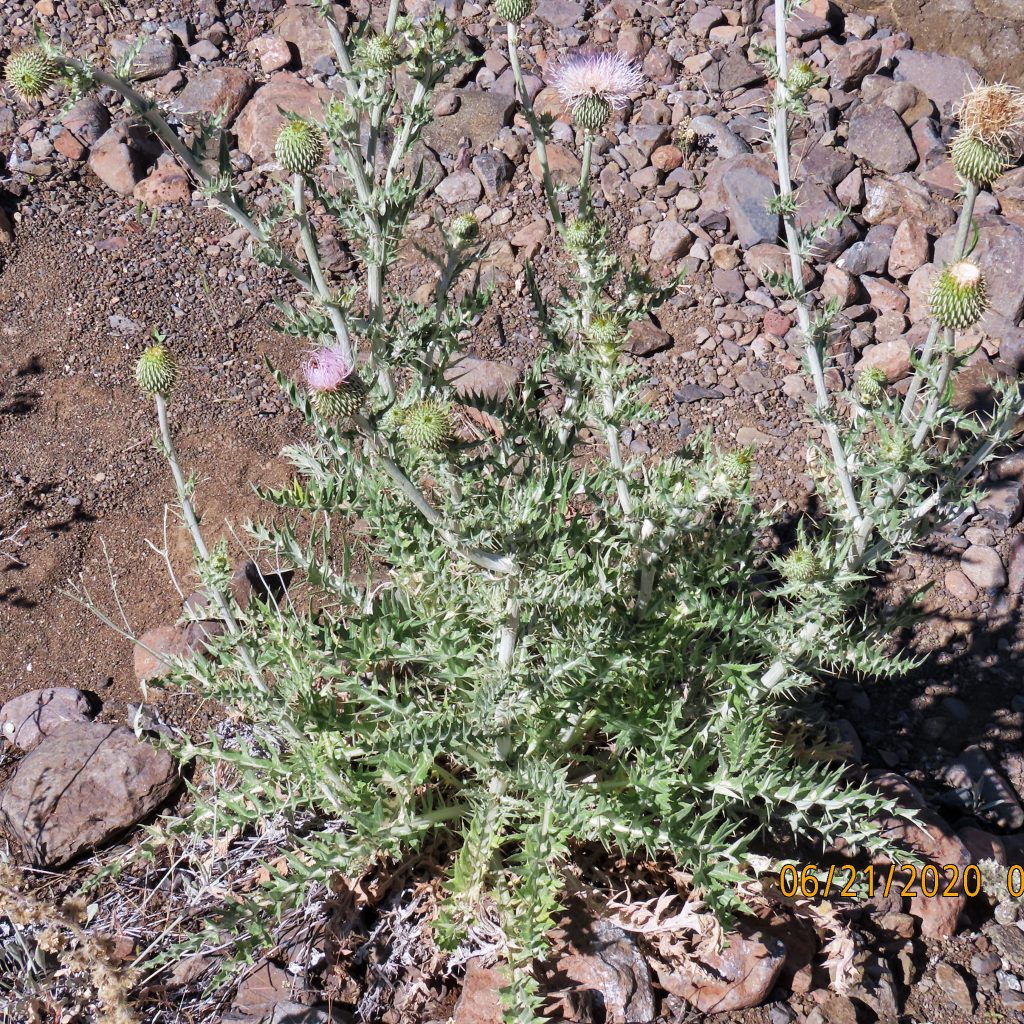
When many of us think of thistles we do so with less than charitable thoughts, because most of the thistles we encounter are non-native, invasive species, growing in thick stands, chafing our flesh, snagging our clothing, and crowding out native wildflowers. I tend to cast a jaundiced eye upon them myself, although they do provide much nectar and pollen at certain times. Because of a question from long time reader Alison Erickson I am adding links here and here for people wanting to differentiate amongst native and non-native thistles

But native thistles are another matter altogether. They too provide food for a variety of insects, but do so with much more decorum, and always enhance the habitat in which they grow. Cirsium cymosum var. canovirens (which, I just discovered whilst researching this, was demoted to varietal status in 2004- previously it was known as C. canovirens) is a prime example of that, with its polite spacing, unique coloring, handsome form, wonderfully textured leaves, and bright flowers.
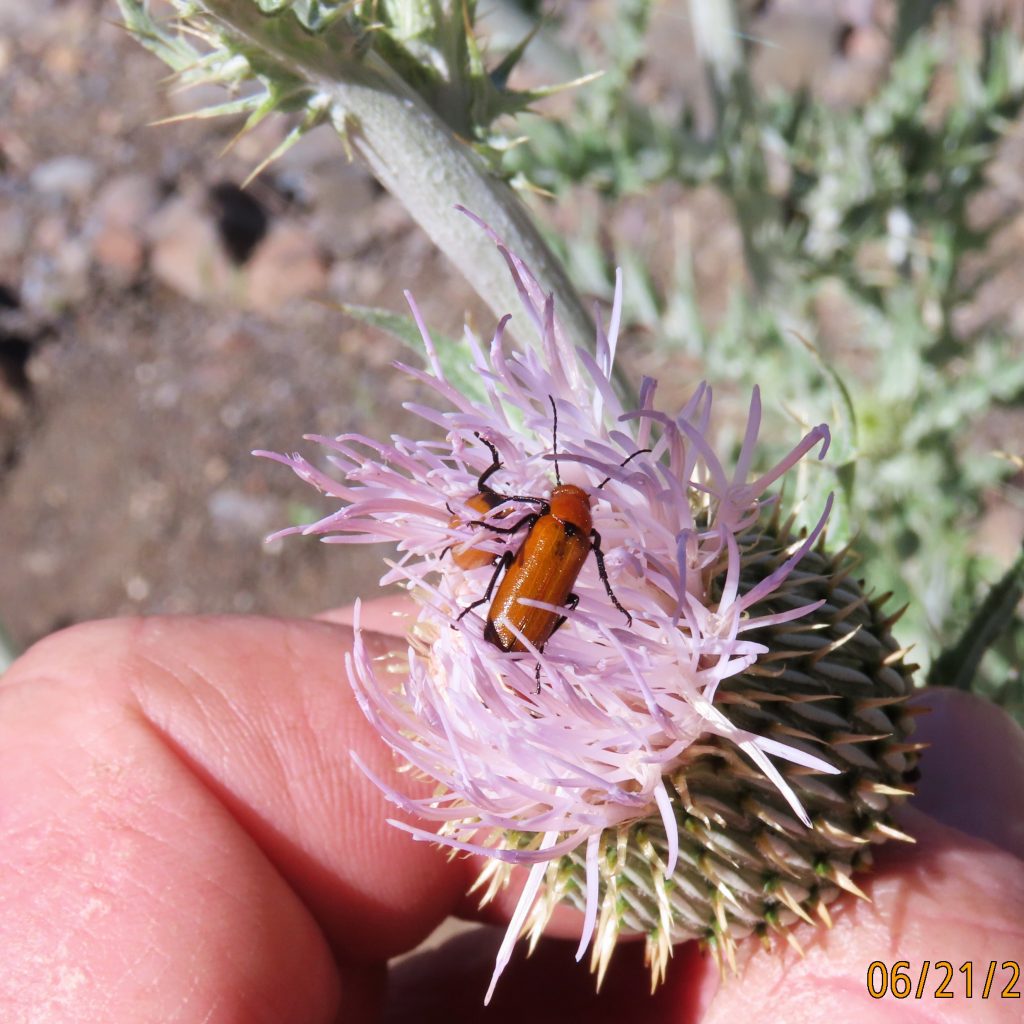
And it’s quite a valuable resource in its high desert habitat, blooming into August, when most other wildflowers have gone to seed. I’ve never seen one that didn’t have insects on it, and often there are several species. It is the only plant on which I’ve ever found the bright orange beetle Nemognatha lutea, and it is attractive to other beetles, Syrphids (flower flies), butterflies and diurnal moths, wasps and native bees, and a variety of true bugs (Hemiptera). Grey Green Thistle is a small oasis in the midst of a harsh environment, and it always gladdens my heart to see one.
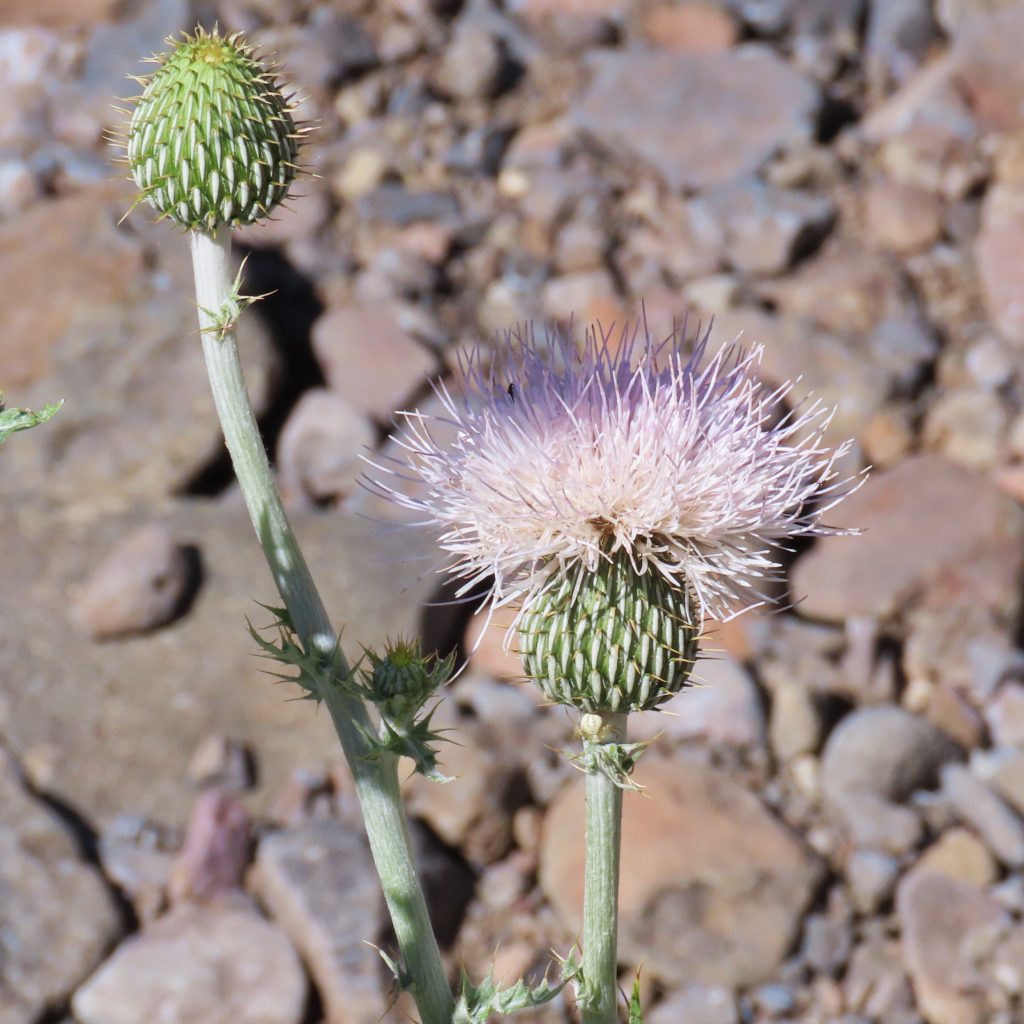
Description– Up to 4’ tall, with a single grey-haired stem that has multiple branches on the upper half; basal leaves usually hairy, grayish green, up to 20” long by 4” wide; leaf margins lobed, divided, and tipped with spines; ventral side of leaves with prominent, straw colored veins; flower heads up to 1” in diameter, cream to light purple, in cobwebby cups; bracts heavily spined.
Similar species–Cirsium cymosum var. cymosum tends to grow in more fertile soils, and has flower heads up to 1.5” in diameter, but positive identification requires microscopic examination of phyllaries; other Cirsium have spines on dorsal leaf surface, lack veins on ventral leaf surfaces, have differently shaped and colored foliage, or different colored flowers.
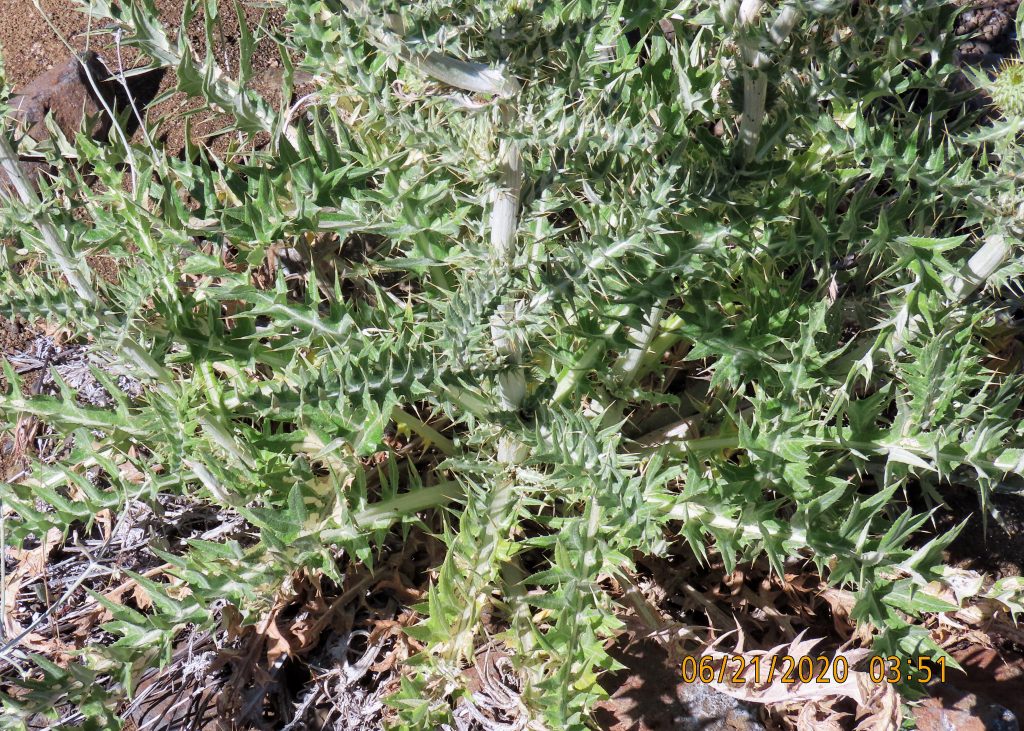
Habitat– Clay and rocky soils in grasslands, sagebrush steppe, arid woodlands, from 1800-7500’ elevation
Range– Great Basin; in our region it is found east of the Cascades and west of the Rockies in Oregon, s Idaho, sw Montana; apparently absent from Washington and BC
Reproductive timing-Blooms April to August
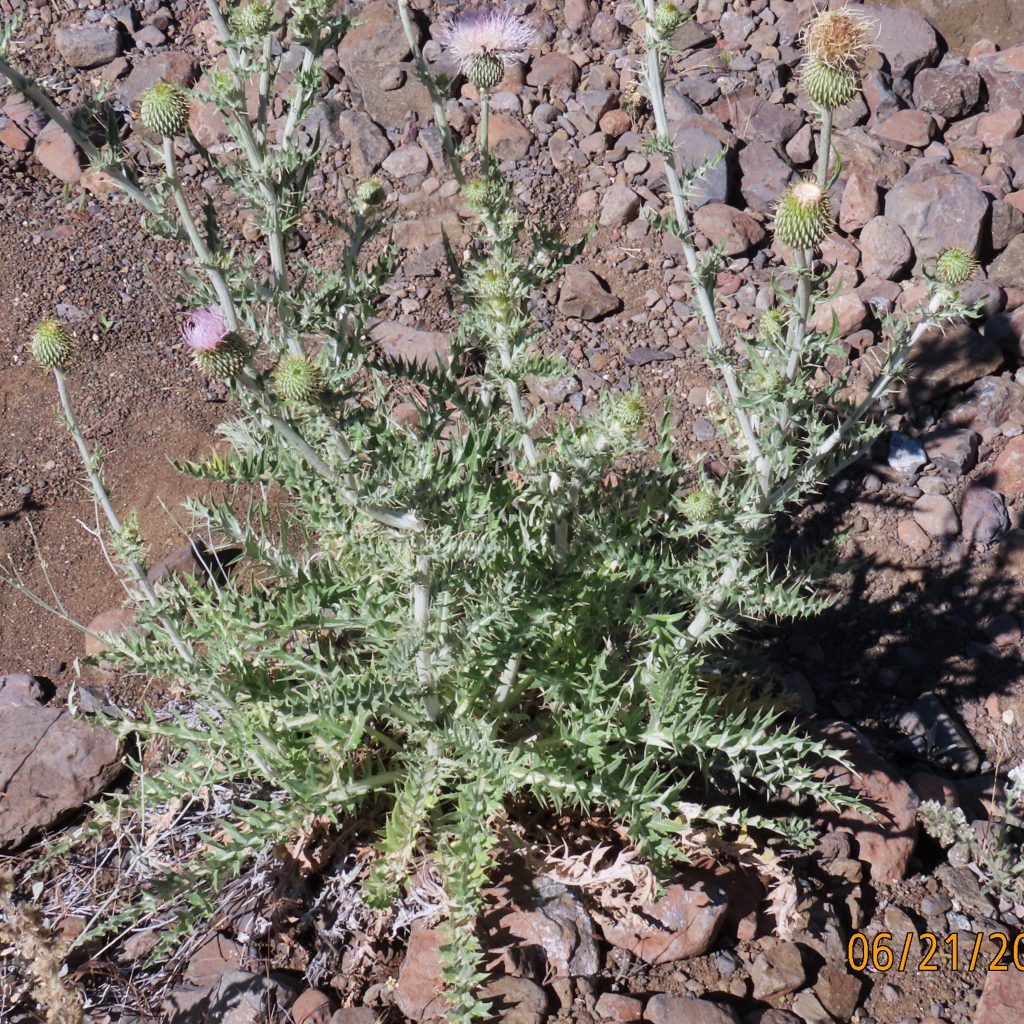
Eaten by– Nemognatha lutea adults are frequent diners; Painted Lady, American Lady, Mylitta Crescent, and California Crescent butterflies use it as a larval host, as do Artichoke Plume Moths, and various Pyrausta moths.
Etymology of names– Cirsium is from the Greek for thistle. The species epithet cymosum is from the Latin for ‘full of shoots’, and refers to the many branches on the top half of the stems. Var. canovirens means grey green in Latin, and refers to the overall coloration of the foliage. Because of this I consider ‘Grey Green Thistle’ to be a standardized common name.
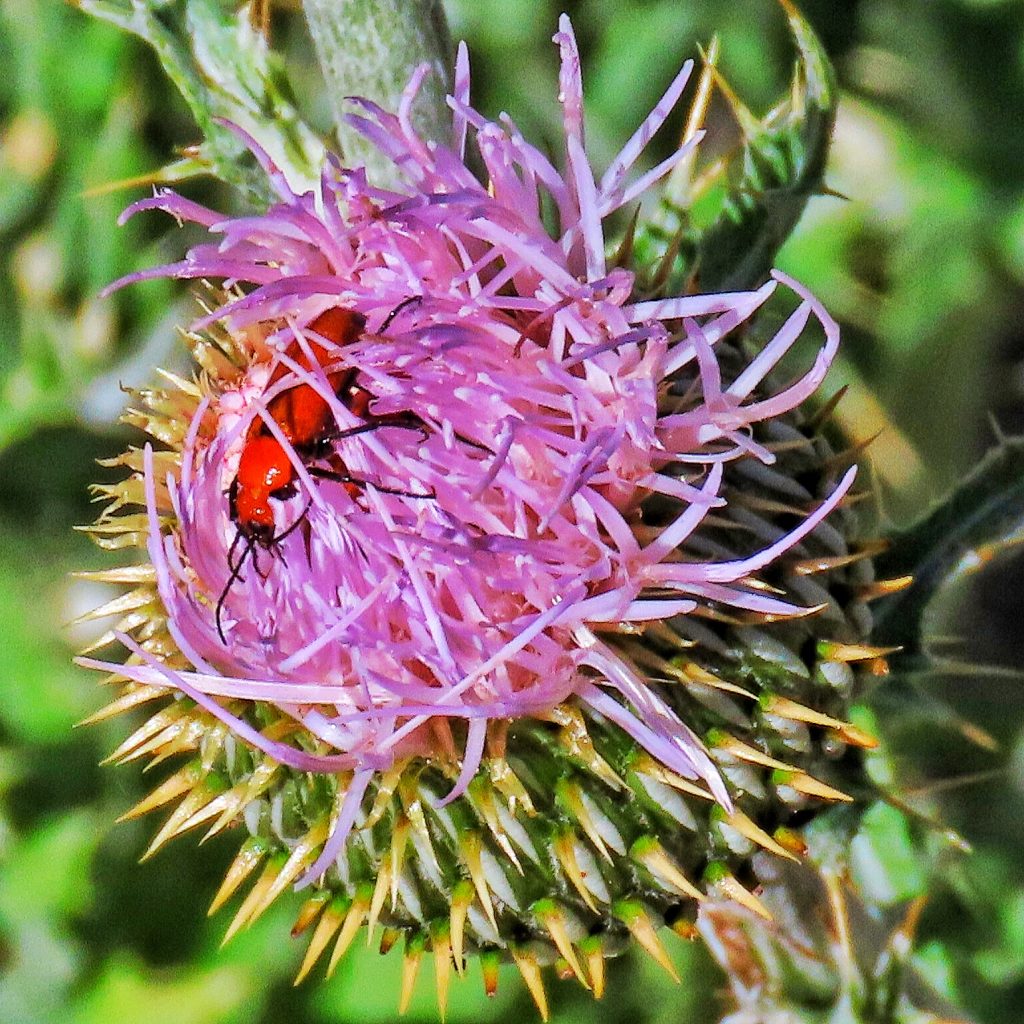
http://www.efloras.org/florataxon.aspx?flora_id=1&taxon_id=250068168
https://www.pnwflowers.com/flower/cirsium-canovirens
http://fieldguide.mt.gov/speciesDetail.aspx?elcode=PDAST2E0H0
http://www.botany.hawaii.edu/faculty/carr/ofp/cir_cym.htm
Gray-green Thistle, Cirsium cymosum var. canovirens
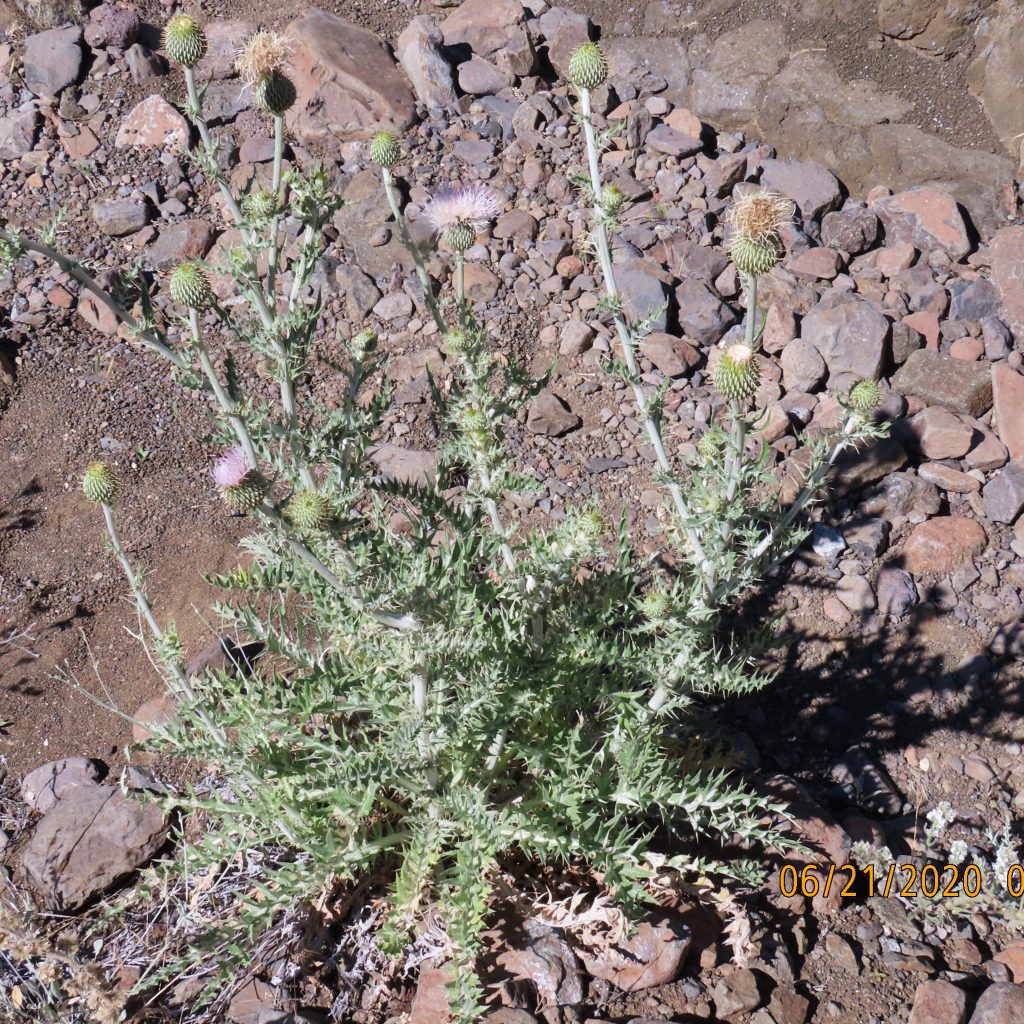
Great information. I looked up Nemognatha lutea because I see them around my garden, and learned their common name is apt — blister beetle, because they exude a defensive secretion that can cause blisters.
I am writing a profile right now on Nemognatha lutea. Hope to publish it this afternoon 😀
Interesting – I always assumed all thistles I saw were invasive. In fact, as park hosts, that is one of our assignments (whether in Bend, Oregon or in Arizona) is to dig up any thistle we find. I hope we haven’t been digging up native thistle! Is there a relatively easy way to tell the difference?
This is a guide to the bad ones;
https://catalog.extension.oregonstate.edu/sites/catalog/files/project/pdf/ec1288.pdf
And here is a useful site;
https://weedwise.conservationdistrict.org/2017/thistle-identification.html/amp
I added links to the first paragraph. Thanks for helping me realize I should have done so originally!
You are welcome, and thanks for the additional info.
We love thistles – a lot of folks forget that artichokes are thistles! We actually love to grow artichokes and cardoons and let them blossom instead of harvest as the bees go nuts over them -the bumbles sometimes appear to fall asleep in them in late afternoon and a few seem to forget to go back to their hives/nests at night, like they’ve got a pollen hangover 🙂
That’s funny about the bumbles!